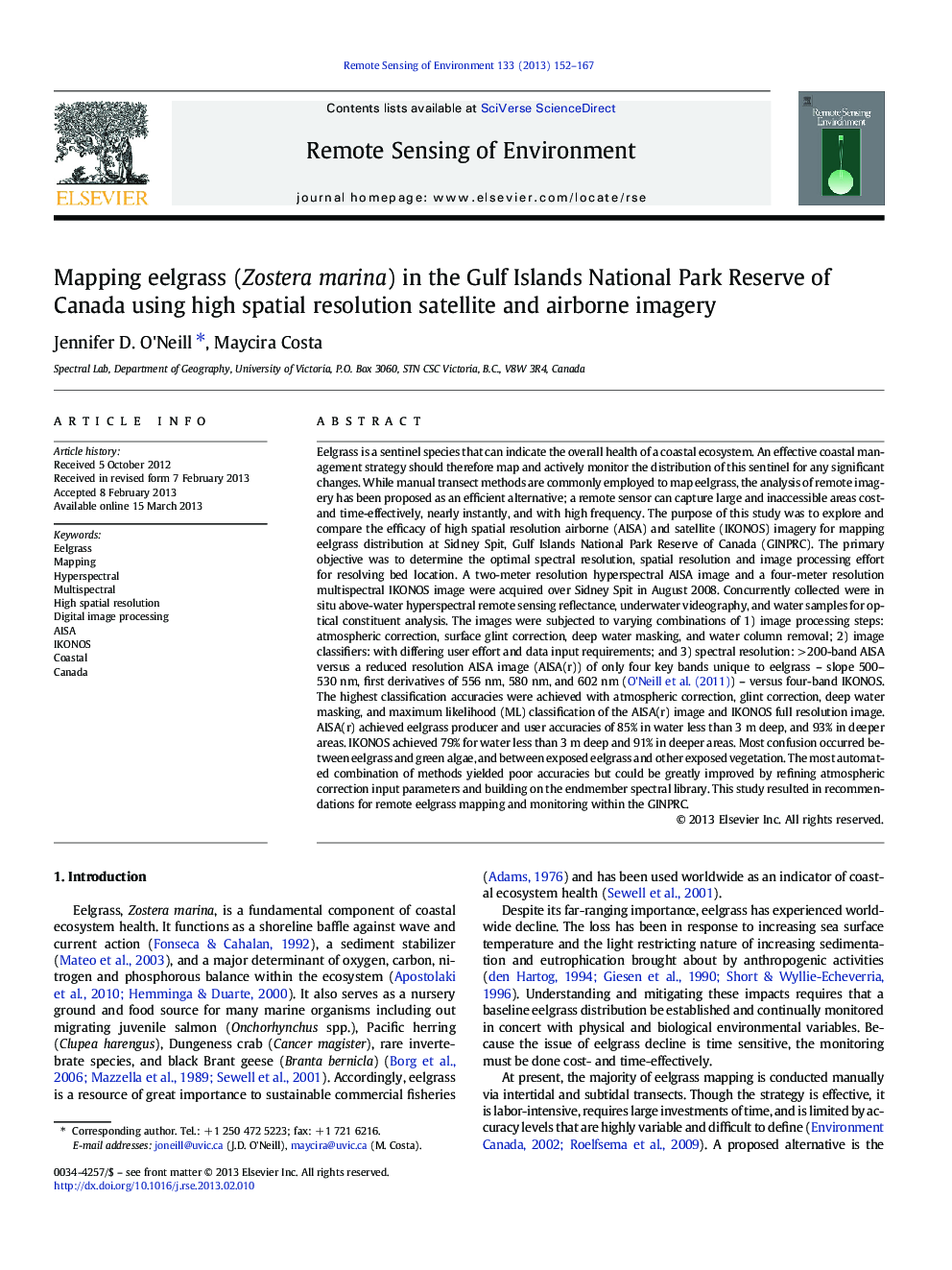| Article ID | Journal | Published Year | Pages | File Type |
|---|---|---|---|---|
| 4458943 | Remote Sensing of Environment | 2013 | 16 Pages |
Eelgrass is a sentinel species that can indicate the overall health of a coastal ecosystem. An effective coastal management strategy should therefore map and actively monitor the distribution of this sentinel for any significant changes. While manual transect methods are commonly employed to map eelgrass, the analysis of remote imagery has been proposed as an efficient alternative; a remote sensor can capture large and inaccessible areas cost- and time-effectively, nearly instantly, and with high frequency. The purpose of this study was to explore and compare the efficacy of high spatial resolution airborne (AISA) and satellite (IKONOS) imagery for mapping eelgrass distribution at Sidney Spit, Gulf Islands National Park Reserve of Canada (GINPRC). The primary objective was to determine the optimal spectral resolution, spatial resolution and image processing effort for resolving bed location. A two-meter resolution hyperspectral AISA image and a four-meter resolution multispectral IKONOS image were acquired over Sidney Spit in August 2008. Concurrently collected were in situ above-water hyperspectral remote sensing reflectance, underwater videography, and water samples for optical constituent analysis. The images were subjected to varying combinations of 1) image processing steps: atmospheric correction, surface glint correction, deep water masking, and water column removal; 2) image classifiers: with differing user effort and data input requirements; and 3) spectral resolution: > 200-band AISA versus a reduced resolution AISA image (AISA(r)) of only four key bands unique to eelgrass – slope 500–530 nm, first derivatives of 556 nm, 580 nm, and 602 nm (O'Neill et al. (2011)) – versus four-band IKONOS. The highest classification accuracies were achieved with atmospheric correction, glint correction, deep water masking, and maximum likelihood (ML) classification of the AISA(r) image and IKONOS full resolution image. AISA(r) achieved eelgrass producer and user accuracies of 85% in water less than 3 m deep, and 93% in deeper areas. IKONOS achieved 79% for water less than 3 m deep and 91% in deeper areas. Most confusion occurred between eelgrass and green algae, and between exposed eelgrass and other exposed vegetation. The most automated combination of methods yielded poor accuracies but could be greatly improved by refining atmospheric correction input parameters and building on the endmember spectral library. This study resulted in recommendations for remote eelgrass mapping and monitoring within the GINPRC.
► Sensor: AISA yielded higher mapping accuracy but at higher monetary cost than IKONOS ► Spectral resolution: Highest mapping accuracy with reduction to key eelgrass bands ► Image processing: Best results with atmosphere/glint correction and deep water mask ► Ideal eelgrass mapping sensor: multispectral with bands at unique eelgrass features ► Greatest classification confusion between eelgrass and green algae
